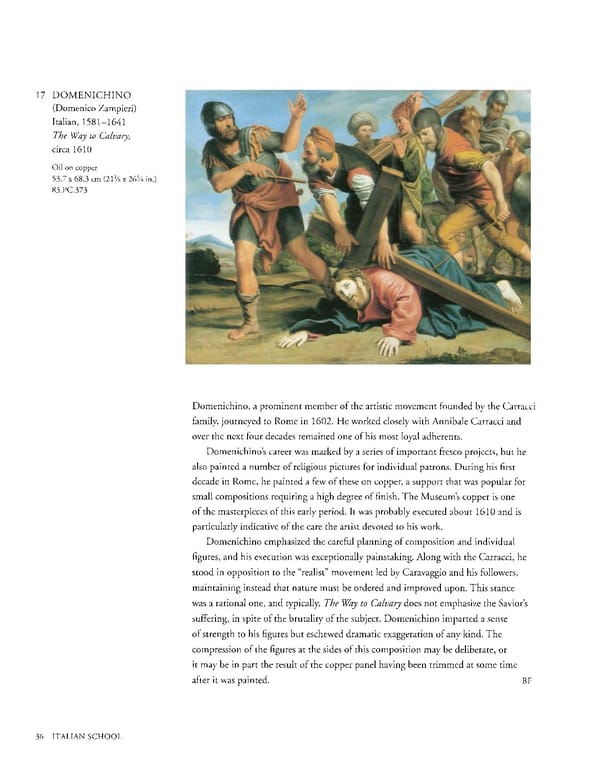17 DOMENICHINO (Domenico Zampieri) Italian, 15811641 The Way to Calvary, circa 1610 Oil on copper 53.7 x 68.3 cm (21 x 26 in.) 83.PC.373 Domenichino, a prominent member of the artistic movement founded by the Carracci family, journeyed to Rome in 1602. He worked closely with Annibale Carracci and over the next four decades remained one of his most loyal adherents. Domenichino's career was marked by a series of important fresco projects, but he also painted a number of religious pictures for individual patrons. During his first decade in Rome, he painted a few of these on copper, a support that was popular for small compositions requiring a high degree of finish. The Museum's copper is one of the masterpieces of this early period. It was probably executed about 1610 and is particularly indicative of the care the artist devoted to his work. Domenichino emphasized the careful planning of composition and individual figures, and his execution was exceptionally painstaking. Along with the Carracci, he stood in opposition to the "realist" movement led by Caravaggio and his followers, maintaining instead that nature must be ordered and improved upon. This stance was a rational one, and typically, The Way to Calvary does not emphasize the Savior's suffering, in spite of the brutality of the subject. Domenichino imparted a sense of strength to his figures but eschewed dramatic exaggeration of any kind. The compression of the figures at the sides of this composition may be deliberate, or it may be in part the result of the copper panel having been trimmed at some time after it was painted. BF 36 ITALIAN SCHOOL
 Masterpieces of the Getty Museum: Paintings Page 36 Page 38
Masterpieces of the Getty Museum: Paintings Page 36 Page 38